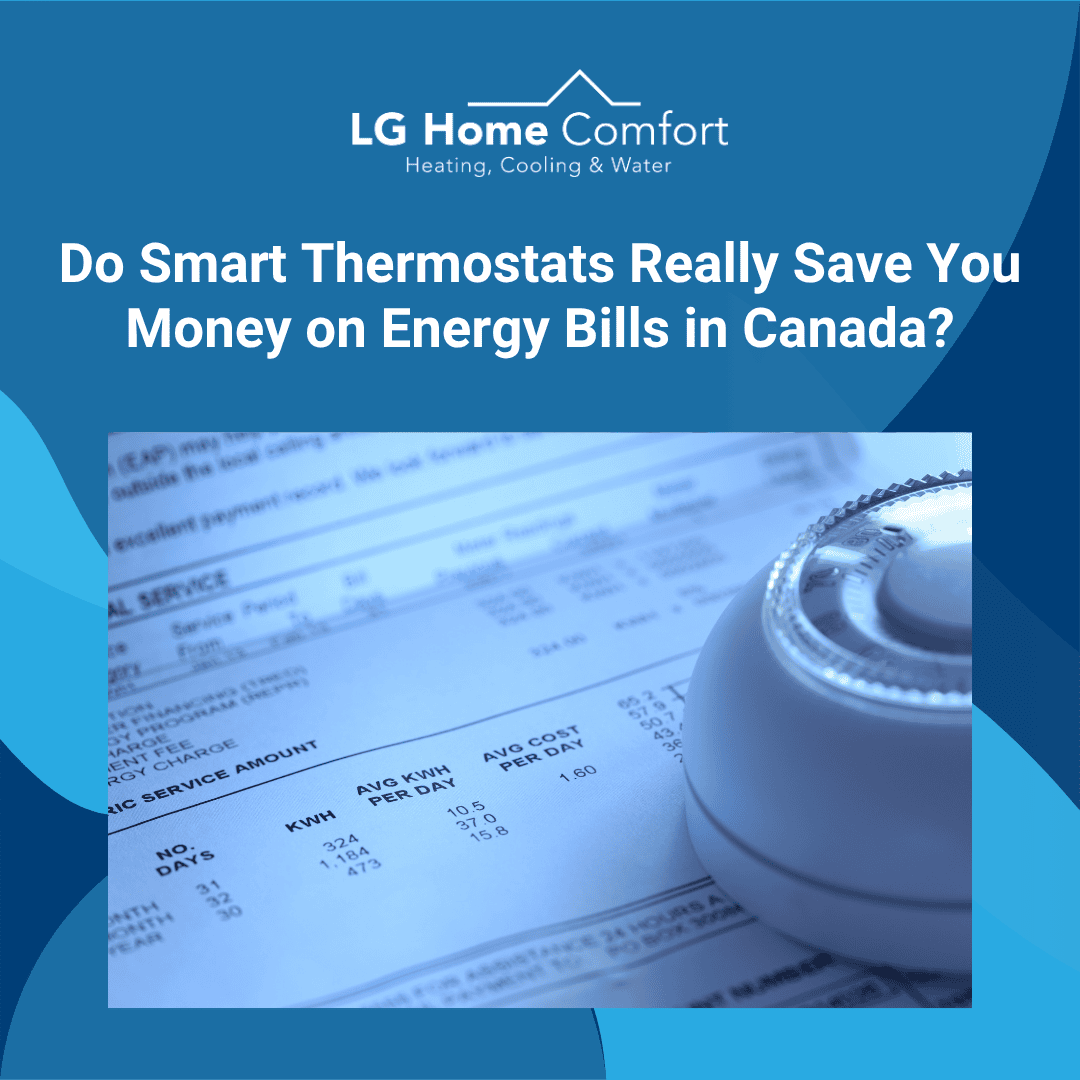Is Your Furnace Ready For This Winter?
Upgrade & Get Up to $1000 Cashback In Furnace Trade-in
Do Smart Thermostats Really Save You Money on Energy Bills in Canada?

As energy prices continue to rise across Ontario and the rest of Canada, many homeowners are looking for ways to lower their utility bills without sacrificing comfort. One increasingly popular upgrade is the smart thermostat — a modern device that not only adjusts your indoor temperature but also helps you cut down on heating and cooling costs year-round.
In this guide, we’ll explain how smart thermostats work, what makes them energy-efficient, and whether the investment truly pays off for Canadian households.
How Smart Thermostats Help You Save on Energy Costs
Automatic Learning and Temperature Adjustment
Smart thermostats use sensors, Wi-Fi, and AI-based algorithms to learn your daily routine and adjust temperatures accordingly. Over time, they optimize your HVAC system’s performance by ensuring that heating or cooling happens only when needed.
For example, if you usually lower the heat at night and raise it during the day, your smart thermostat will learn this and automate the process — no more manual adjustments or forgetting to change settings before leaving the house.
Geofencing for Energy Savings
Many smart thermostats include geofencing technology, which uses your smartphone’s GPS to detect when you’ve left home. Once you’re out of range, the thermostat automatically switches to an energy-saving mode, preventing wasteful HVAC usage when no one is around.
This feature is especially useful for families with irregular schedules, or those who often forget to turn the thermostat down before leaving.
Remote Control from Anywhere
Through mobile apps or web dashboards, smart thermostats allow you to manage your home’s temperature remotely. Whether you’re at work, on vacation, or simply on the couch, you can easily monitor and adjust your HVAC system.
This convenience ensures that you’re not unnecessarily heating or cooling an empty home — a common cause of high energy bills.
Energy Usage Reports and Insights
Smart thermostats provide detailed energy usage reports, showing you when your system runs most frequently and offering suggestions for efficiency. These insights help homeowners understand their HVAC habits and make informed changes that lead to long-term savings.
Some models even notify you when your furnace or air conditioner may need maintenance, helping prevent costly breakdowns.
Adaptive Learning Over Time
Unlike older thermostats, smart models get smarter with time. As they collect data on your preferences and usage patterns, they become more efficient at managing your HVAC system. The result? Better comfort and consistent savings without having to manually tweak settings every day.
Integration with Smart Home Devices
Smart thermostats can integrate with other smart devices like lights, fans, and even smart blinds. For example, your thermostat can coordinate with your blinds to reduce heat gain during hot afternoons, or work with motion sensors to detect occupancy.
This type of automation creates a holistic energy-saving ecosystem, perfect for eco-conscious or tech-savvy homeowners.
How Much Can You Save?
According to Energy Star, most homeowners save about 8% annually on heating and cooling bills after switching to a smart thermostat. For many Canadians, this translates to $50–$100 in savings per year, depending on:
- Climate zone (Ontario’s seasonal extremes offer more opportunity for savings)
- Energy rates
- Occupancy patterns
- Your HVAC system’s age and efficiency
When Are Smart Thermostats Most Beneficial?
Smart thermostats offer the most noticeable benefits in these situations:
- Zoned HVAC systems: Control each area of the home independently for better efficiency.
- Vacation homes: Remotely manage your HVAC to avoid heating/cooling empty spaces.
- Homes with older insulation: Minimize energy loss with smarter scheduling.
- High energy cost regions: Offset premium rates with optimized HVAC performance.
Important Installation Tips
Most smart thermostats are relatively easy to install if you’re comfortable handling electrical wiring. However, some models require a C-wire (common wire) for continuous power. If your home doesn’t have one, you might need a power extender kit or a professional installation.
Before buying, always check if the thermostat is compatible with your existing HVAC system.
Smart Thermostats vs. Programmable Thermostats
While programmable thermostats can save money when used properly, many users forget to update schedules or don’t use the features at all. Smart thermostats eliminate the guesswork with automatic adjustments, real-time data, and mobile control, making them far more effective in real-world usage.
Do Smart Thermostats Work Well in Canada?
Absolutely. Given Canada’s fluctuating climate, smart thermostats offer a practical and cost-effective way to reduce HVAC energy consumption, especially during peak heating and cooling months.
At LG Home Comfort, we help Ontario homeowners choose, install, and integrate smart thermostats that work best with their homes and heating/cooling systems. Whether you’re in Kitchener, Waterloo, Guelph, or Cambridge, we’re here to help you build a smarter, more energy-efficient home.
Final Thoughts
If you’re looking for an easy and effective way to cut your energy bills, increase comfort, and make your home smarter, a smart thermostat is one of the best investments you can make.
With features like learning algorithms, remote access, energy reporting, and HVAC integration, smart thermostats don’t just change your temperature — they change the way you manage energy.
FAQs:
- Do smart thermostats really reduce energy bills in Canada?
Yes. Canadian homeowners can save up to 8% annually on heating and cooling costs by switching to a smart thermostat with automated settings and energy reports. - What is the most energy-efficient smart thermostat for Ontario homes?
Top-rated models like Google Nest and Ecobee, are known for high energy efficiency, remote sensors, and HVAC compatibility in Ontario climates. - How much money can I save with a smart thermostat in Canada?
On average, you can save $50–$100 per year depending on usage habits, your home’s HVAC system, and whether you’re using advanced features like geofencing. - Is a smart thermostat better than a programmable thermostat?
Yes. Smart thermostats offer real-time learning, mobile control, and adaptive scheduling, which make them more effective than traditional programmable thermostats. - Can smart thermostats work without a C-wire?
Some models can work without a C-wire or include power adapters. However, many require one for full functionality. Always check compatibility before purchase. - Should I get a smart thermostat for my vacation property?
Absolutely. Smart thermostats let you control indoor temperatures remotely, helping reduce energy waste and protect your HVAC system while you’re away.
Terms and Conditions
- Once an initial service has been completed, the customer will be on a one-year commitment
- After the initial 12 months, the contract will be renewed on a month-to-month cadence
- If a service is completed for the next year, it automatically renews the commitment for an additional year
- Customers can cancel at any time after the 12-month initial commitment as long as the following year’s service has not been completed.
- Customers need to provide 30 days written notice in order to cancel their plan




